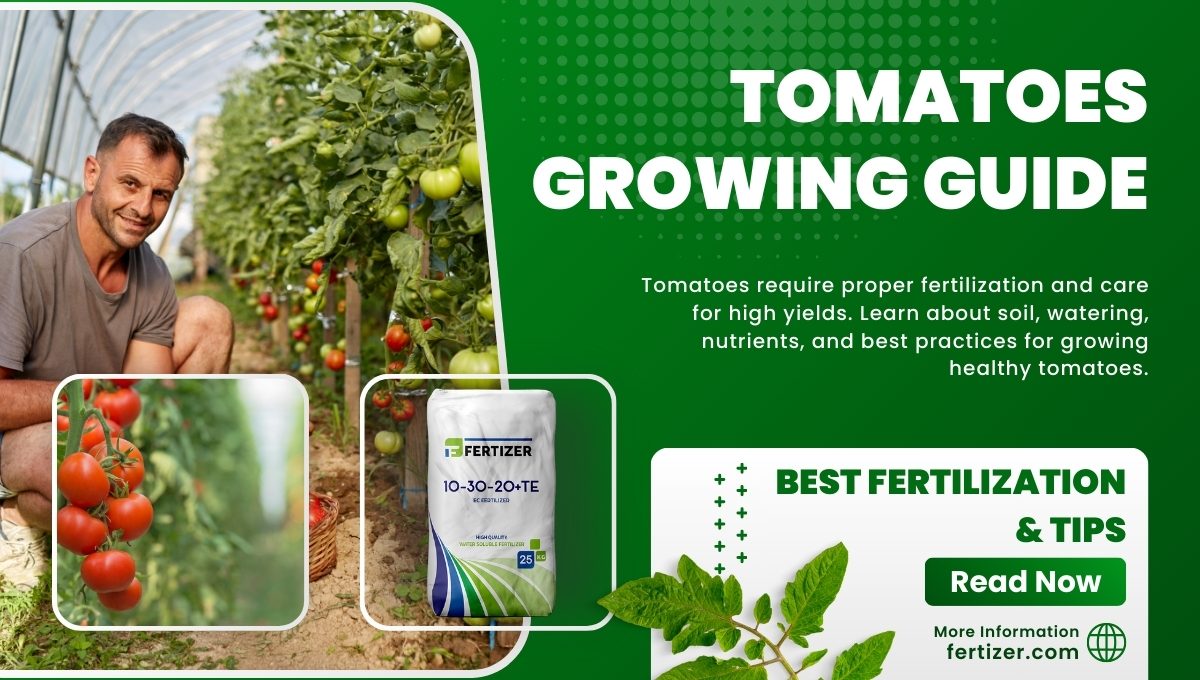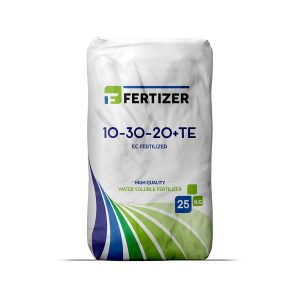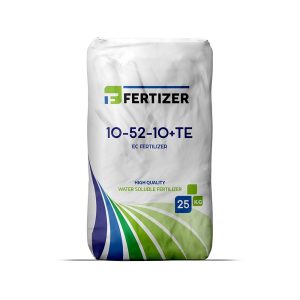Tomatoes are one of the most widely grown and consumed vegetables worldwide. To achieve high-quality and abundant yields, it is essential to implement the necessary care and fertilization programs. Whether grown in small areas for personal consumption or on large-scale commercial farms, understanding the nutrient requirements, growth cycles, and fertilization techniques of tomatoes is crucial for maximizing yield and quality.
Tomato Growth Requirements
Soil and Root Development
Tomatoes grow best in well-drained, medium-textured soils. When cultivated using drip irrigation, root growth mainly occurs within the first 20 cm of soil. To ensure adequate oxygen supply to the roots, the soil should not be waterlogged or compacted. Groundwater level plays a crucial role in this aspect.
Watering Needs
Regular watering, especially through drip irrigation systems, is vital for tomatoes. Proper moisture levels support nutrient absorption and help prevent stress-related diseases. However, excessive watering can lead to root rot, while insufficient watering can cause nutrient deficiencies and low-quality fruit production.
Understanding the Tomato Growth Cycle
Perennial and Annual Growth Characteristics
Tomatoes are classified as perennial-annual plants, meaning they can go through multiple harvest cycles. After the first fruit set, vegetative (leaf and stem) growth and generative (flower and fruit) growth occur simultaneously. This unique growth pattern directly affects fertilization strategies, requiring a consistent feeding program that supports both leaf development and fruit production.
The Importance of Fertilization
To maintain continuous growth and maximize yield, a well-planned fertilization schedule is necessary. The correct NPK ratio (Nitrogen, Phosphorus, and Potassium) should support the following functions:
- Nitrogen (N): Promotes leaf development, but excessive amounts can delay flowering and fruit set.
- Phosphorus (P): Encourages root growth and flowering.
- Potassium (K): Plays a fundamental role in carbohydrate transport within the plant and water utilization. Tomatoes require more potassium than nitrogen.
Essential Nutrients for Tomatoes
Calcium: Preventing Blossom End Rot (BER)
Calcium strengthens tomato plant cell walls and helps prevent blossom end rot (BER), a common deficiency disorder characterized by black, sunken spots at the bottom of the fruit. To prevent BER:
- Follow a consistent watering schedule.
- Ensure adequate calcium levels in the plant.
- Avoid excessive nitrogen and potassium fertilization, as they can hinder calcium uptake.
Micronutrients: Supporting Continuous Growth
Since tomatoes go through multiple harvest cycles, the following micronutrients are essential:
- Magnesium: Supports chlorophyll production and photosynthesis.
- Iron: Plays a role in energy transfer and enzyme activation.
- Zinc, Boron, and Manganese: Contribute to various metabolic processes essential for fruit development.
Best Fertilization Strategies for Tomatoes
Early-Stage Fertilization
In the initial growth stages, phosphorus-rich fertilizers should be used to support root development. The specific ratio should be determined based on soil analysis. A common recommendation is an NPK ratio of 1-3-2 (e.g., Fertizer 10-30-20, Fertizer 10-52-10). This helps the plant establish a strong root system before transitioning to the fruit-bearing phase.
Fruit Development Stage
When tomatoes begin flowering and fruit setting, potassium and calcium should be prioritized. The recommended NPK ratio is 15-15-30. At this stage:
- Reduce nitrogen levels to prevent excessive leaf growth.
- Increase potassium levels for fruit firmness and color development.
- Maintain sufficient calcium levels to prevent BER.
Avoiding Over-Fertilization
Excessive fertilizer use can result in:
- Weak plant structures and poor root systems.
- Excessive leaf growth at the expense of fruit development.
- Imbalanced nutrient levels leading to low yield and poor quality.
For this reason, fertilization programs should be based on soil and plant analysis.
Common Problems and Solutions
1. Why Are My Tomato Leaves Turning Yellow?
- Possible Causes: Nutrient deficiencies (nitrogen, sulfur, iron, etc.), overwatering, or disease.
- Solution: Adjust your fertilization program based on plant analysis, improve drainage, and monitor plant health.
2. How Can I Increase My Tomato Yield?
- Apply a balanced fertilization program.
- Ensure regular irrigation.
- Do not neglect essential care practices.
3. How Should Tomatoes Be Watered?
- Use drip irrigation to maintain moisture balance.
- Water early in the morning to reduce evaporation.
- Avoid watering the leaves to prevent fungal diseases—focus on the root zone instead.
Successful tomato cultivation requires a deep understanding of nutrient needs, irrigation schedules, and fertilization strategies. By maintaining the correct NPK ratios, ensuring sufficient calcium levels, and preventing nutrient imbalances, you can achieve maximum yield and produce high-quality tomatoes throughout the season. Implementing these best practices will keep your tomato plants healthy, productive, and resistant to common issues. 🍅🌱



